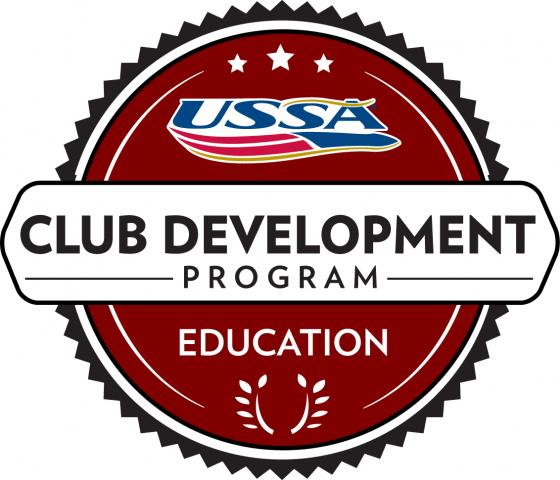-
Provide love and support regardless of the sport outcome.
-
Make your child responsible for his/her sport preparation (e.g., equipment ready, practice time, etc.)
-
Have realistic expectations and keep success in perspective
-
Expose child to many different sports and activities
-
Hold your child accountable for poor behaviors during sporting events
-
Provide an appropriate push when your child is reluctant or unmotivated
-
Emphasize the importance of hard work.
-
Provide transportation, financial, & logistical support
-
Recognize and encourage your child when he or she does something right
-
Show interest, enthusiasm, and support for your child and team
-
Be in control of your emotions
-
Thank the coaches, officials, and other volunteers
-
Remain in the spectator area during competitions
-
Help make sport fun
Parent Don’ts
-
Criticize my child for his or her sport performance
-
Critique your child immediately following the sporting event or during the car ride home
-
Allow sport to dominate your child’s life
-
Exert pressure to win
-
Treat your child differently dependent upon whether he or she won or lost
-
Put your interests ahead of your child’s in sport
-
Getting too caught up in sport and making it over-important
-
Belittle the opponent’s talent or preparation
-
Make all the decisions for your child
-
Advise the coach on how to do the job
-
Make insulting comments to athletes, parents, officials, or coaches of other teams
-
Drink alcohol at sports events or come to one having drunk too much
Parents have the right to know and see:
-
The club’s staff training, background and coaching experience.
-
That their child will be safe.
-
The club’s coaching philosophy, view of competition and structure of program.
-
That their child will be treated fairly.
-
That the club will deal with parents in an open and honest manner.
-
That all leadership and staff of the club will conduct themselves in a professional manner.
-
That the club will listen to appropriate concerns and be responsive.
-
That the club makes an effort to know your athletes individually and treat them as people with respect and sensitivity.
-
That their child will learn, improve and have fun in the sport.
-
That the club does not collude with destructive peer group behavior, and it is vigilant in identifying any forms of abuse and intervening appropriately.
-
Show up and participate
-
Respect and follow team rules
-
Be open to constructive feedback
-
Be an unselfish team player
-
Be a good sport and role model to younger athletes
-
Work hard and be committed to excellence
-
Be able to manage success and failure
-
Manage priorities such as academics and family obligations
-
Take responsibility for life choices
-
Take care of physical health
-
Right to participate in sports
-
Right to participate at a level commensurate with each child’s maturity and ability
-
Right to have qualified adult leadership.
-
Right to play as a child and not as an adult
-
Right of children to share in the leadership and decision-making of their sport participation
-
Right to participate in safe and healthy environments
-
Right to proper preparation for participation in sports
-
Right to an equal opportunity to strive for success
-
Right to be treated with dignity
-
Right to have fun in sports
Coach responsibilities:
-
Embody the vision and mission of the team
-
Carry out the day to day operation of the club
-
Be responsible for all levels of the team
-
Directly coach athletes in their group
-
Educate and supervise all coaches (head coach)
-
Direct and participate in the parent education program
-
Prepare a monthly report to BOD and attends meetings (head coach)
-
Plan budget and assists in fundraising (head coach)
-
Set and implement workout/training schedule and program
-
See that all competitions are covered by staff (head coach)
-
Determine competition schedule
-
Be responsible for athletes at competitions
-
Maintain office hours
-
Exercise appropriate authority to discipline and potentially dismiss any athlete
-
Provide guidance to long term development of athletes
-
Be a positive role model
-
Handle or oversee publicity, team travel, team records, newsletter, team files, roster, media contacts, etc. (entire coaching staff)
-
A USSA coach is a professional educator and
-
A coach pledges to make the best interests of all children in the program the priority in both heart and mind and
-
A coach pledges to try to maintain the delicate state of balance between what may be best for the individual and the needs of the group and
-
A coach pledges to always communicate honestly, openly and in a mature manner, and to be approachable and receptive to reasonable concerns and
-
therefore has the right to expect the club community to broach concerns directly, in an appropriate time and place, and in a spirit of fundamental mutual interest and in a manner that refrains from fruitless discussions of such concerns with third parties.
-
A coach pledges his or her best efforts to provide athletes with a range of growth experiences (some satisfying and fulfilling, others challenging and frustrating) to develop his or her ability to respond appropriately to the full spectrum of experiences in sport and life and
-
A coach pledges to acknowledge his or her frailties, imperfections, and humanity and within those constraints to strive to be consistent and fair in my dealings with team members and
-
therefore has the right to expect to be forgiving of individual actions with which some don't completely agree, while focusing on the overall objective- that all are working to help children grow up to be a stronger, more self-confident and better adjusted people.
Club, Parent and Coach roles, responsibilities and strategies for communicating and implementing the same are further defined on the following handouts:
-
“Strategies for Clubs”
-
“Strategies for Parents”
-
“Strategies for Coaches”
In the USSA Club environment all are passionate about the well-being and success of young athletes – in both sport and life. However, conflicts including but not limited to the following may arise:
-
Unclear mission and vision
-
Unclear or unmet roles and responsibilities
-
Unrecognized rights
-
Disputes regarding coaching and training
-
Club-Coach-Parent conflicts
-
Breaches in honor code and club policies (all clubs should have clear and consistent policies and procedures in place in this area). As part of an established honor code, and the policies and procedures regarding the same, clubs may consider making it a policy that this mediation process is a regular procedure for major infractions and that the athlete or parents involved are responsible for all costs.
-
Discrimination or Favoritism
-
Bullying or Abuse (additional resources, reporting and support is available to all USSA members through SafeSport.org and the USOC)
-
Misaligned expectations
-
Communication
-
Business practices
-
Organizational practices
-
Professionalism
When conflicts arise in clubs it is often necessary and helpful to engage the expertise of third party mediators or conflict resolution experts. This is not only effective, but also helps divert situations from becoming overly contentious or even litigious. Often, through a professional mediation process parties can better understand how to move forward with meaningful solutions that they have come up with and that they are in control of. This can be a huge step in the right direction for the success of the club as a whole.
The USSA has worked to identify and qualify experiences professionals in the regions represented by affiliate USSA clubs. These experts have been vetted by the USSA, and are another resource the USSA is facilitating for its members. As part of their agreement with USSA, approved mediators have agreed to reduced rates, limited travel and accommodation expenses, and the use of USSA staff and resources to ensure the most efficient and effective process.
Further, recommended mediators working with the USSA have been trained and briefed regarding the USSA’s best principles and practices for clubs, coaches, parents and athletes such as the roles and responsibilities above. The USSA Club Development Manager and appropriate USSA staff will continue
to assist as needed in the mediation process by addressing questions or concerns from the mediator, clubs, coaches or parents regarding best principles and practices, and realistic solutions. As such any USSA staff involved in the mediation would be subject to confidentiality agreements, neutrality and the established ground rules of mediation.
These guidelines, as well as the identification, recommendation and facilitation of professional mediators and the mediation process is intend for the purposes stated herein and for no other purpose. Neither the USSA, nor the mediators with whom it partners are giving legal advise or council through this process.


